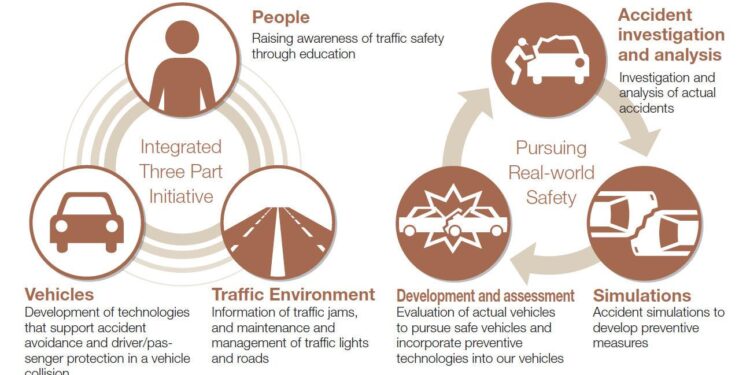North Macedonia is facing growing concerns over vehicle safety as a recent series of inspections reveal alarming rates of failure in mandatory roadworthiness tests. Despite increasing attention to road safety across the Balkans, a significant number of cars on North Macedonian roads are unable to meet the required standards, raising urgent questions about regulatory enforcement and public safety. This report delves into the factors behind the widespread test failures and their implications for drivers and authorities alike.
North Macedonia’s Vehicle Safety Crisis Exposed in Latest Tests
Recent vehicle safety evaluations in North Macedonia have unveiled alarming deficiencies across a wide range of automobiles on the road. Cars that failed critical braking and stability tests accounted for nearly 40% of those inspected, raising urgent concerns over traffic safety standards and enforcement. The leading causes identified include outdated brake systems, inadequate maintenance, and a lack of adherence to basic mechanical safety protocols. Experts warn that without immediate regulatory reforms and stricter controls, the nation could see a spike in traffic-related injuries and fatalities.
The report highlights several risk factors contributing to this crisis:
- Poor inspection procedures: Outdated and inconsistent vehicle testing.
- Neglected upkeep: Owners often skip regular maintenance checks.
- Substandard replacement parts: The prevalence of counterfeit or low-quality components.
- Lack of public awareness: Insufficient campaigns on vehicle safety importance.
| Test Category | Pass Rate | Fail Rate |
|---|---|---|
| Braking Efficiency | 62% | 38% |
| Steering & Suspension | 54% | 46% |
| Lighting & Visibility | 70% | 30% |
| Emission Control | 58% | 42% |
Expert Analysis Reveals Root Causes Behind Failing Brake Systems
Investigations by automotive safety experts have uncovered several critical faults contributing to the widespread brake failures troubling North Macedonia’s vehicle safety tests. Primary among these issues is the persistent use of substandard brake pads and discs, often imported without adequate quality control. Mechanics and inspectors alike report frequent encounters with worn components that fail to meet international safety benchmarks, highlighting systemic negligence in maintenance routines. Compounding the problem is a lack of rigorous annual inspections and a regulatory environment that does not enforce timely replacements, allowing vehicles with impaired braking function to remain on the roads.
Additionally, the analysis reveals that insufficient driver education and awareness play crucial roles in perpetuating the problem. Many vehicle owners neglect routine checks, unaware of early warning signs of brake deterioration. Experts emphasize that combining technical flaws with human factors drastically undermines braking reliability. The table below summarizes the core factors identified during the recent inquiry:
| Root Cause | Impact Level | Suggested Action |
|---|---|---|
| Low-quality brake parts | High | Enforce stricter import regulations |
| Infrequent maintenance | Medium | Mandate regular service checks |
| Poor driver awareness | Medium | Enhance public safety campaigns |
| Lax inspection standards | High | Upgrade testing protocols |
- Quality control must be prioritized at border customs and local workshops.
- Automated or digital inspections could significantly reduce human error.
- Collaborative efforts between authorities and manufacturers are essential to drive reform.
Roadmap for Reform Recommendations to Improve Automotive Safety Standards
To address the alarming rate of vehicle safety failures, a comprehensive reform strategy is imperative. Experts propose a multi-tiered approach focusing on strengthening regulatory frameworks, enhancing inspection protocols, and introducing modern technology to ensure compliance with European automotive safety standards. This includes mandatory adoption of advanced diagnostic tools during vehicle inspections, which will help identify critical faults such as brake system failures before vehicles return to the road.
In addition, policymakers are urged to implement continuous professional training for technical inspectors and enforce stricter penalties for non-compliance. Transparency and public access to inspection results can also play a pivotal role in driving accountability among vehicle owners and service providers. The following table illustrates key reform pillars alongside their expected impact and implementation timeline:
| Reform Pillar | Expected Impact | Timeline |
|---|---|---|
| Advanced Diagnostic Integration | Higher detection rate of hidden faults | 12 months |
| Enhanced Inspector Training | Improved assessment accuracy | 6 months |
| Stricter Penalty Enforcement | Reduced reoffense cases | Immediate |
| Public Access to Inspection Data | Increased transparency and accountability | 9 months |
- Collaboration with EU agencies to harmonize safety benchmarks and practices.
- Public awareness campaigns targeting vehicle owners about the importance of regular maintenance.
- Investment in infrastructure to modernize inspection centers nationwide.
Insights and Conclusions
As North Macedonia grapples with persistently low vehicle safety test scores, the urgency for comprehensive reforms becomes increasingly clear. Improving road safety standards not only requires stricter enforcement and upgraded inspection protocols but also a concerted effort from policymakers, industry stakeholders, and the public. Without decisive action, the country risks further endangering its drivers and passengers, undermining broader efforts to align with European Union safety benchmarks. The road ahead demands transparency, accountability, and commitment to change-lest the nation’s vehicle safety crisis continues unchecked.
















